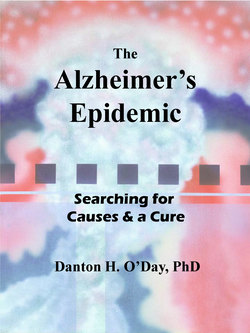Читать книгу The Alzheimer's Epidemic - Danton O'Day - Страница 20
На сайте Литреса книга снята с продажи.
The Search for Biomarkers
ОглавлениеBiomarkers are indicators of the existence of or the potential for developing a specific disease. The quest for biomarkers is of central interest to biomedical researchers in all fields. A biomarker may be the presence of a certain component in the blood or some other bodily fluid. For atherosclerosis, bad cholesterol is a biomarker—an indicator that the individual with high blood LDL (low-density lipoprotein) is on the pathway to ill health. For prostate cancer, PSA (prostate-specific antigen) is often used as a biomarker. A biomarker can also be a behavioral, psychological or physiological indicator as we will cover later in this volume. By knowing what biomarker is best for determining if a specific disease is present, doctors can then assess the situation, determine the risk and help their patients accordingly.
So what is the biomarker? Actually there is more than one current biomarker for Alzheimer’s disease and others are being searched for even as you read this chapter. In Chapter 11 we’ll talk about this quest for biomarkers. For now, let’s look at the prime candidates. To do this we need to look mainly at two events we’ve already touched upon: the appearance of amyloid plaques and neurofibrillary tangles. Let’s start with the plaques.
As discussed above, we know that amyloid plaques form outside of nerve cells in the brain and are tightly linked to the development and progress of Alzheimer’s disease. Most researchers believe this accumulation of amyloid peptides and other proteins in those plaques is a primary cause of Alzheimer’s disease in the majority of cases. Thus the “amyloid hypothesis” argues that the deposition of amyloid plaques occurs, which leads to problems with nerve cell function, which then lead to the changes in a person’s cognitive abilities. Since the major and consistent component that is present in all amyloid plaques is the short amyloid beta peptide, then it follows that this peptide should be an excellent biomarker for the disease. As a biomarker, the presence or absence of this peptide in the wrong places at the wrong time is evaluated. Thus the loss of amyloid beta peptide from the cerebrospinal fluid is a useful biomarker. This loss occurs as the amyloid beta in the cerebrospinal fluid moves into the brain where it is converted into plaques. Thus another biomarker is the appearance of that amyloid beta in plaques in the brain as detected by PET (Positron Emission Tomography).
Since tau proteins make up the tangles in the Alzheimer’s brain, the presence of tau protein variants is another major biomarker. (There is evidence that neurofibrillary tangles are a later event in the progression of the disease and not a cause.) Another biomarker is evidence of brain atrophy as measured using MRI (Magnetic Resonance Imaging). Yet another is the decrease in a person’s cognitive function—their ability to remember and reason, for example—as revealed by various psychological tests.
It is widely believed that using two or more of the aforementioned biomarkers can serve as an indicator of the future development of Alzheimer’s disease. Two questions still remain: “Are there even better biomarkers that will allow us to determine even earlier stages of Alzheimer’s disease?” and “Are there biomarkers that will indicate when the disease actually starts?” These goals are shared by many doing frontline research.
